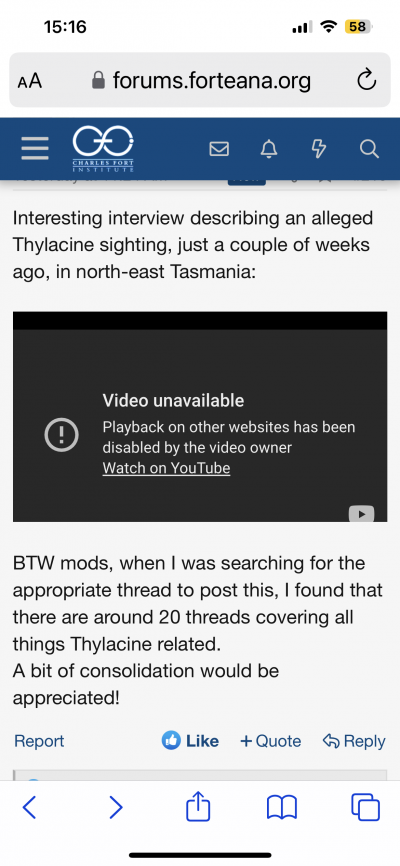Just to be clear, I'm a friend of Adrian's, that might make me biased or it might make the idea of his making false claims stick in my throat because I've no doubt that he's as honest as they come. I'm also an active researcher in this field and I'm looking to understand what caused the species' extinction in Tasmania, so I do not believe that the thylacine is still around.
As the page you cited shows, there are feral dogs in Tasmania but they're described as an intermittent problem. Cats are far more of a problem and deer have been loose in that area for over 100 years. As I understand it, these are the most significant ferals in the area in question. However, in terms of absolutely ruling out feral dogs in Tasmania Adrian's statement could be said to be inaccurate. As to whether you could consider it false, I'd argue the question is whether there is a feral dog population in the area where the howl was heard. Neither you nor I can answer that question, I doubt anyone could rule it out, but I do know that he isn't picking any evidence of them up on trail cams (before any wit points it out, no he's not picking up thylacines either). So, I think that under the circumstances of an interview, which aren't easy if you aren't used to them (I've said some truly stupid things with a microphone pointed at me), his comment is forgivable.
Whilst I don't agree with Adrian, and he doesn't agree with me, what stands, is his dedication.


